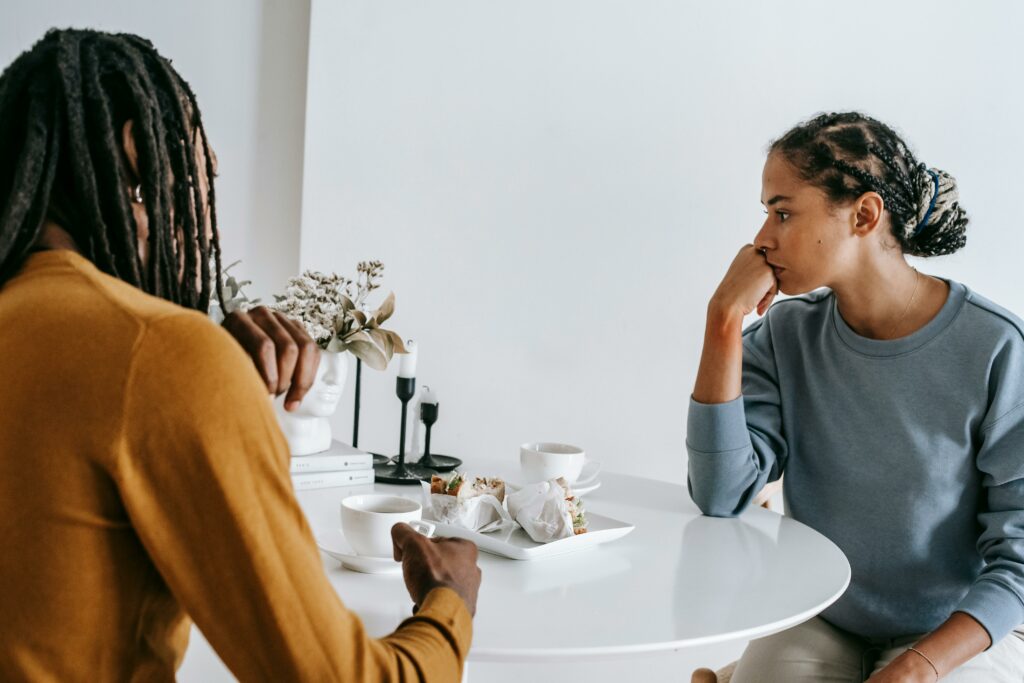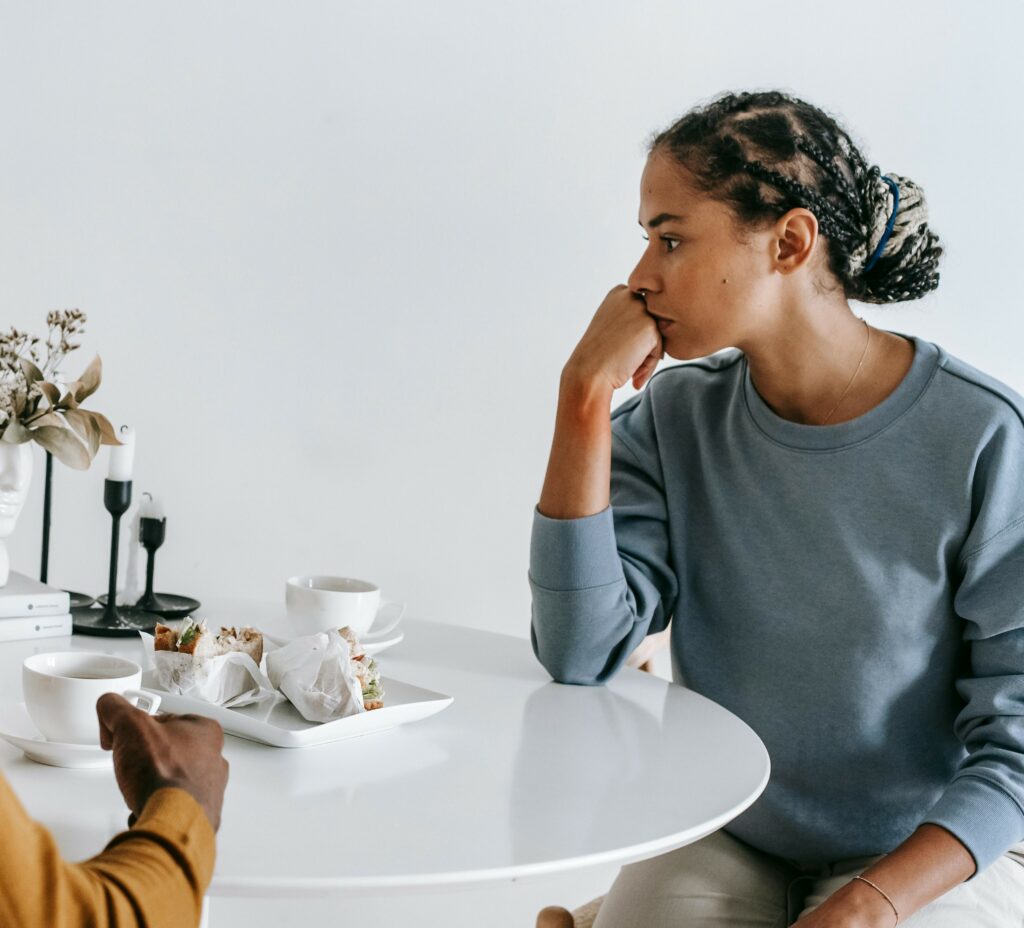
Admittedly, when I was thinking of what image to use for this lab, I was trying to choose from options that I felt would be easiest to crop and glean new meaning from. I began my search looking up pictures of wolf packs, as they’re my favorite animal and I figured a change in composition could bring new emphasis to a wolf in the background. This didn’t turn out that fruitful, so then I attempted searching for images of dog sledding, which turned out more uneventful. Lastly, I began searching for images of people arguing. Most stock photos depicting arguments often have individuals on clear sides of the photo, as the one I found does. I knew then that this photo would be perfect for manipulation.
The original image shows tension between the couple through their body language. The lifted hand of the individual on the left gives the illusion, to me, that they are in the middle of speaking. The individual on the right is pointedly looking away, positionally making it clear that she is frustrated and not open to listening to what the other person has to say. This is a common human experience, I feel. It is in many of our natures to avoid conflict and I find it common that avoiding eye contact is a gesture that commonly arises when one is upset or feels as if they are in the wrong. However, by cropping, the meaning in the photo can change.

When cropping, I still wanted to keep the right-side woman as the focus point. By keeping the table and the hand of the left-side individual in the crop, this is achieved by following the rule of thirds. The woman is on the right-most side, setting the composition to favor her as the focal point. With the omission of the second individual (minus the hand), the interpretation of the image completely changes. It is still inferred that there is a conversation happening that the woman is not actively participating in. However, she now looks more contemplative rather than upset. Perhaps she is worried or distracted about something? She could be receiving bad news, such as the passing of a loved one or bad prospects on a job. This crop leaves an air of mystery on the actual situation.


Hi Amber! I really appreciate your post because not only did your cropping change the meaning of the original, it also made me reconsider my perception of the first photo. When I looked at the original image and read the title, I did not question at all whether or not this couple was arguing. When I saw your cropped image which isolated the woman’s face, I got the same impression that you did – she seems to be contemplative or lost in thought rather than upset. Considering that, I looked at the original image again with less certainty that this couple might be arguing. While the woman is not making eye contact and does have a more serious expression, neither looks angry in a way that’s clearly identifiable.
I saw this last week and thought it was an interesting photo. The person on the left’s right hand, specifically the thumb vein, signals impassioned expression. It’s interesting reading their body language and the original photo can be read a few different ways. Instinctually, I think you will gravitate to the person on the right. It reads as if they are finished listening. The positioned hand over lips suggests there is a desire to refrain from responding – listening? Not sure. The body position reads as a prompt and anticipated exit. Cropping the photo brings the person on the right into focus, removes the restraint previously observed and replaces the emotion with consideration. The left hand on chin and lip is almost the universal symbol of thought or thinking. They are actively taking in words and deeply considering something. The person on the left’s right hand is still visible in the crop so there are remnants of an exchange present. Cropping that person’s hand entirely out of the photo isolates the person on the right to a different mood. In isolation, I can see a person on the verge of breaking a heavily weighted thought. I liked this photo.
Hi Amber,
Your decision to explore the potential for cropping and extracting new meanings from the chosen image is intriguing. The initial analysis of the original photo, highlighting the dynamics between the individuals through body language, provides a rich foundation for your subsequent manipulation. The deliberate cropping, with a focus on the right-side woman following the rule of thirds, is a great choice. It transforms the narrative and shifts the emotional tone from frustration to contemplation. The decision to exclude the second individual creates a sense of mystery around the ongoing conversation. The viewer is left to ponder the reasons behind the woman’s contemplative expression, opening the door to a variety of interpretations. Your suggestion that she may be dealing with personal challenges, such as receiving distressing news or facing uncertainties in her professional life, adds a layer of complexity to the narrative. This not only invites viewers to engage more deeply with the image but also prompts them to consider the untold story behind the captured moment.
Hello Amber.
So, your decision to crop the photo to focus on the woman at the table effectively shifts the narrative of the image. By centering the woman and leaving just a hint of the other individual’s hand, you’ve created a scene that feels more introspective and less confrontational. This shift from a clear argument to a more ambiguous, contemplative moment demonstrates the power of cropping to change the story told by a photograph. Your use of the rule of thirds, positioning the woman off-center, adds to the sense of her being lost in thought or distant, enhancing the mystery and depth of the scene. This change in composition invites viewers to interpret the situation differently, perhaps considering deeper, unseen aspects of the woman’s thoughts or circumstances. this way it also feels that she maybe already decided or she is knows what is the next step for her and she’s just patiently waits until the “conversation” done.
Good Job!